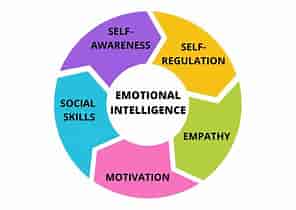Introduction:
In an era where digital transformation is reshaping industries and cyber threats are ever-evolving, safeguarding information security has become a paramount concern for organizations worldwide. ISO 27001, an internationally recognized standard for information security management systems (ISMS), provides a robust framework for protecting sensitive data and managing information security risks. This article explores the significance of ISO 27001, its core components, and the benefits it offers to organizations striving to secure their information assets in the digital age.
1. Understanding ISO 27001: ISO 27001 is part of the ISO/IEC 27000 family of standards, which provide comprehensive guidelines for information security management. The standard specifies the requirements for establishing, implementing, maintaining, and continually improving an ISMS. ISO 27001 adopts a risk-based approach, ensuring that organizations systematically assess and manage information security risks to protect the confidentiality, integrity, and availability of information.
2. Core Components of ISO 27001: The standard outlines several key components essential for an effective ISMS:
- Context of the Organization: Understanding internal and external issues, stakeholders, and their expectations regarding information security.
- Leadership: Commitment from top management to support the ISMS and integrate information security into organizational processes.
- Planning: Identifying and addressing risks and opportunities, setting information security objectives, and planning actions to achieve them.
- Support: Ensuring necessary resources, competence, awareness, communication, and documented information for the ISMS.
- Operation: Implementing risk assessment and treatment processes, and managing changes and documented procedures.
- Performance Evaluation: Monitoring, measuring, analyzing, and evaluating the effectiveness of the ISMS through internal audits and management reviews.
- Improvement: Continuously improving the ISMS by addressing nonconformities and implementing corrective actions.
3. Benefits of ISO 27001 Certification:
Enhanced Information Security: ISO 27001 provides a structured approach to identifying and mitigating information security risks, ensuring that sensitive data is protected from unauthorized access, breaches, and other cyber threats.
Regulatory Compliance: Adhering to ISO 27001 helps organizations comply with legal, regulatory, and contractual requirements related to information security, avoiding potential penalties and legal issues.
Improved Risk Management: The risk-based methodology of ISO 27001 enables organizations to systematically identify, assess, and manage information security risks, enhancing overall risk management practices.
Customer Trust and Confidence: Achieving ISO 27001 certification demonstrates a commitment to information security, enhancing customer trust and confidence in the organization’s ability to protect their data.
Competitive Advantage: ISO 27001 certification sets organizations apart from competitors by showcasing a proactive approach to information security, potentially attracting new clients and business opportunities.
Operational Efficiency: Implementing ISO 27001 helps streamline information security processes, reducing redundancies and improving overall operational efficiency.
Incident Response and Resilience: A well-implemented ISMS ensures that organizations are better prepared to respond to information security incidents, minimizing potential damage and ensuring business continuity.
4. Implementing ISO 27001: Implementing ISO 27001 involves several steps:
- Gap Analysis: Assessing the current state of information security practices against ISO 27001 requirements to identify gaps.
- Risk Assessment: Conducting a thorough risk assessment to identify information security risks and vulnerabilities.
- Policy Development: Establishing information security policies, procedures, and controls to address identified risks.
- Training and Awareness: Ensuring that employees are aware of information security policies and their roles in maintaining security.
- Internal Audit: Regularly auditing the ISMS to ensure compliance and effectiveness.
- Certification Audit: Undergoing an external audit by a certified body to achieve ISO 27001 certification.
Conclusion:
In the digital age, protecting information assets is critical for organizational success and resilience. ISO 27001 provides a comprehensive framework for managing information security risks and safeguarding sensitive data. By implementing and certifying to ISO 27001, organizations can enhance their information security posture, achieve regulatory compliance, and build trust with customers and stakeholders. Embracing ISO 27001 is not just about achieving certification; it’s about fostering a culture of security and continuous improvement in an ever-changing digital landscape.





Leave a Reply